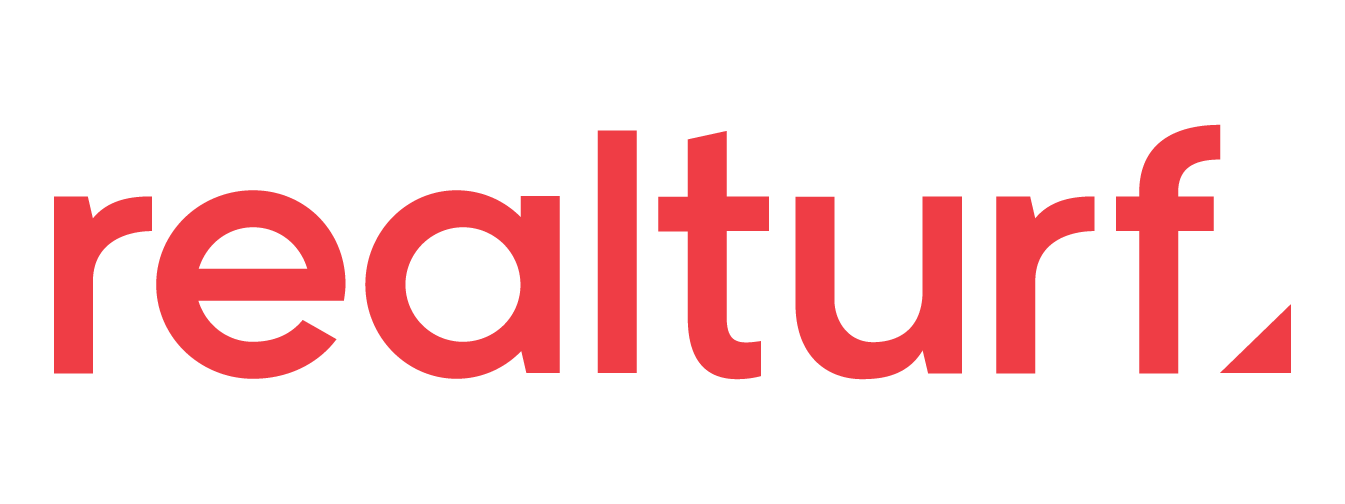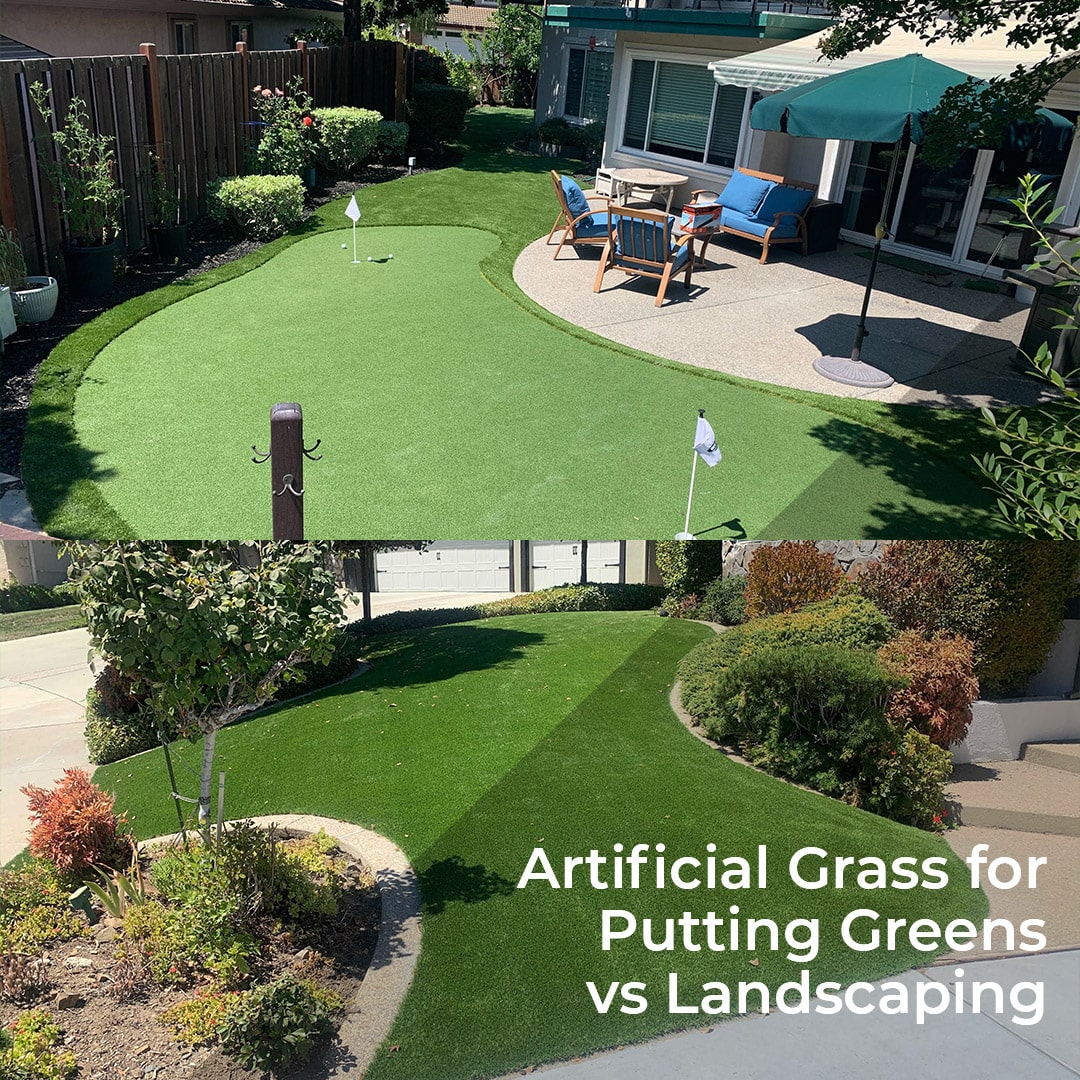Tee Up the Differences: Artificial Grass for Putting Greens vs. Landscaping
Artificial grass has changed how we decorate outdoor spaces and play sports, providing a long-lasting, easy-care option instead of real grass. And while synthetic turf products may look the same to the untrained eye, there are actually huge differences between each one.
For instance, to give you the best artificial putting green experience, we use turf specifically engineered for golf. Landscaping turf simply won’t work for this purpose, as it doesn’t have the technical features required for proper ball roll, green speed, and other elements.
Understanding these differences can help you decide which artificial turf will work best for your project.
Comparing Putting Green Turf vs. Artificial Grass for Landscapes
1. Material Composition
- Putting Greens
Artificial grass for putting greens is designed to replicate the smooth, consistent surface of a natural golf green. The fibers used are typically made from high-quality, UV-resistant polypropylene or nylon to provide a smooth surface that allows golf balls to roll true.
Nylon is especially prized for its durability and the realistic playing surface it offers, though it can be more expensive.
- Landscaping
Manufacturers usually make artificial grass for landscaping purposes from a blend of polyethylene, polypropylene, and sometimes nylon.
Polyethylene fibers provide a soft, realistic appearance and feel, making them ideal for areas where people will walk barefoot or children will play. Manufacturers often use polypropylene for less traffic-intensive areas because it is cost-effective. The combination of materials ensures a balance between aesthetic appeal and durability.
2. Pile Height with Artificial Grass
- Putting Greens
The pile height of artificial grass for putting greens is significantly shorter than that for landscaping. Typically ranging between 0.375 to 0.5 inches, the short pile height is crucial for a smooth, fast surface that mimics the conditions of professional golf greens. This height allows for consistent ball roll and realistic putting experiences.
- Landscaping
On the other hand, landscaping turf varies more widely in pile height, typically between 1.5 to 2 inches, to mimic the look and feel of natural grass. The longer fibers provide a plush, soft surface that is more comfortable for general use in gardens, lawns, and play areas. The height can be adjusted according to the desired aesthetic and functional needs of the space.
3. Durability
- Putting Greens
Durability is paramount for artificial turf putting green, given the repetitive nature of golf shots and foot traffic. Materials like nylon offer superior resistance to wear and UV damage, ensuring the green maintains its playability and appearance over time.
The construction is also designed to withstand the impact of golf clubs and balls, ensuring longevity.
- Landscaping
While durability is also important for landscaping applications, the focus is more on withstanding general foot traffic, pets, and weather conditions.
Landscaping turf is designed to retain its color and texture under various environmental stresses, including extreme temperatures, rain, and sunlight. The backing material is also crucial for ensuring proper drainage and durability.
4. Installation
- Putting Greens
Installing artificial grass for putting greens requires precise preparation to ensure a flat, uniform surface. The base typically consists of multiple layers of materials like crushed stone and sand, compacted to create a stable foundation that promotes smooth ball roll. The installation process is meticulous, often involving professional services to achieve the desired outcome.
- Landscaping
Landscaping with artificial grass involves preparing the ground to ensure proper drainage and stability, but the process is generally less intensive than for putting greens.
The base preparation includes removing the top layer of soil, adding a crushed rock base, and compacting it before laying the turf. Similar to putting greens, though, it’s a technical process best left to professionals.
Learn More
Want to learn more? We can walk you through our artificial turf products, from the manufacturing process to the features offered by each one. We’re also happy to discuss the Realturf artificial grass installation process and answer any question you have. Simply call 773-517-7798 or message us to book your free consultation.

